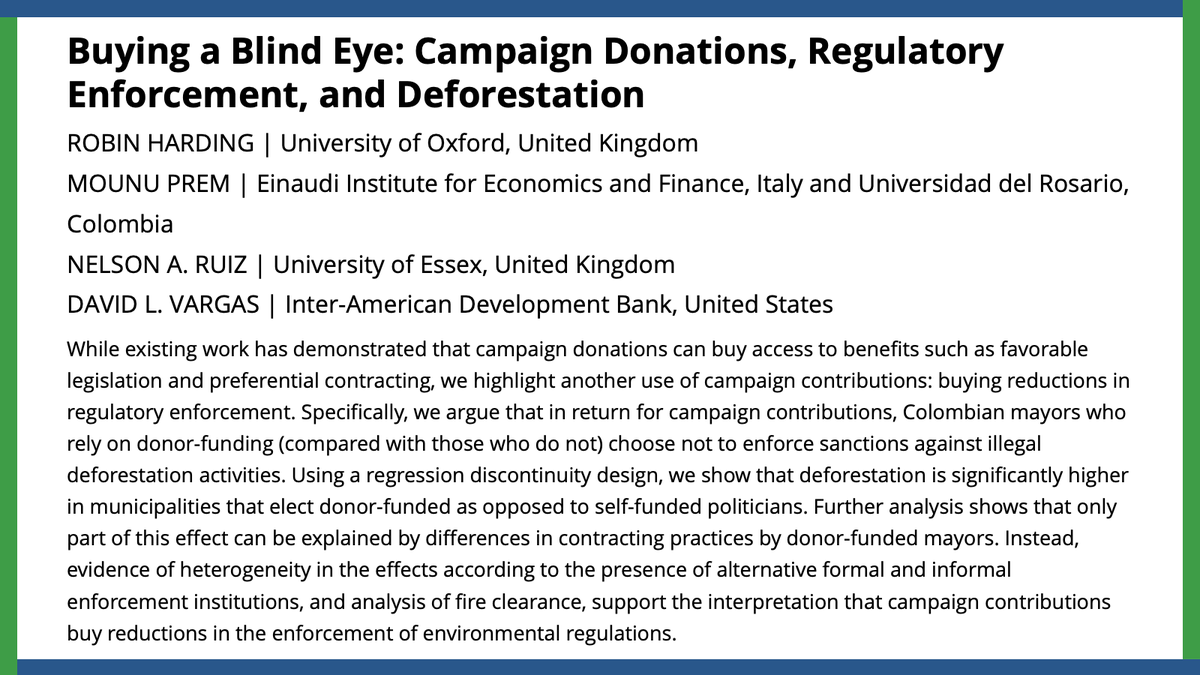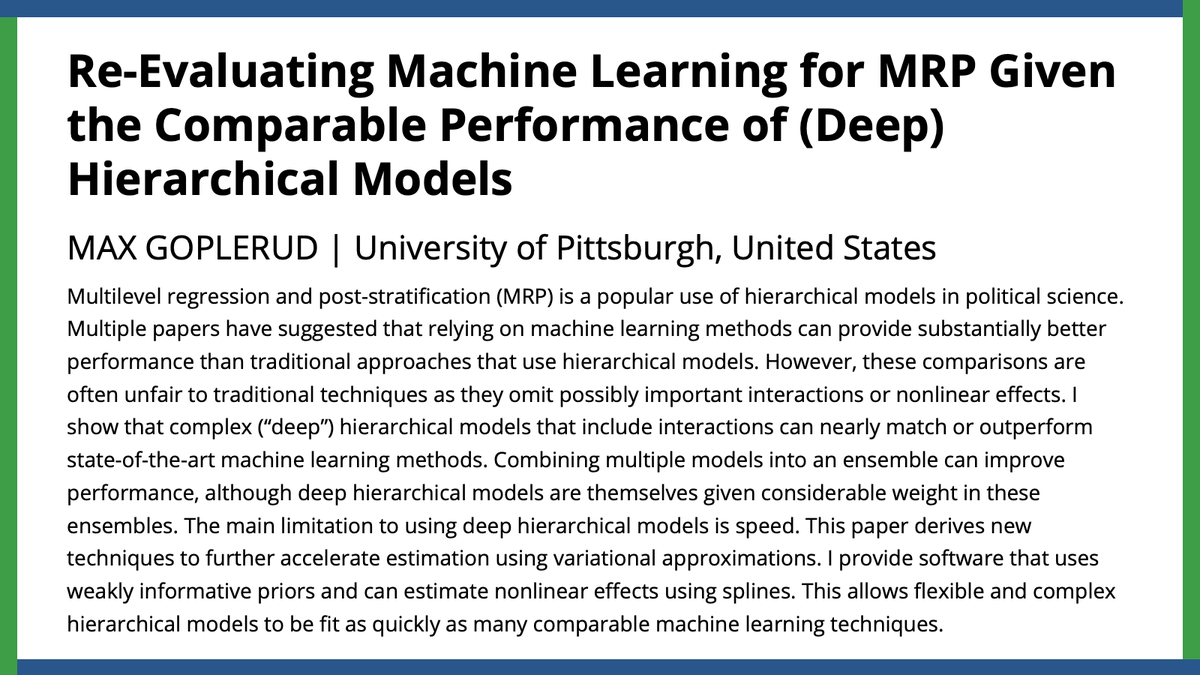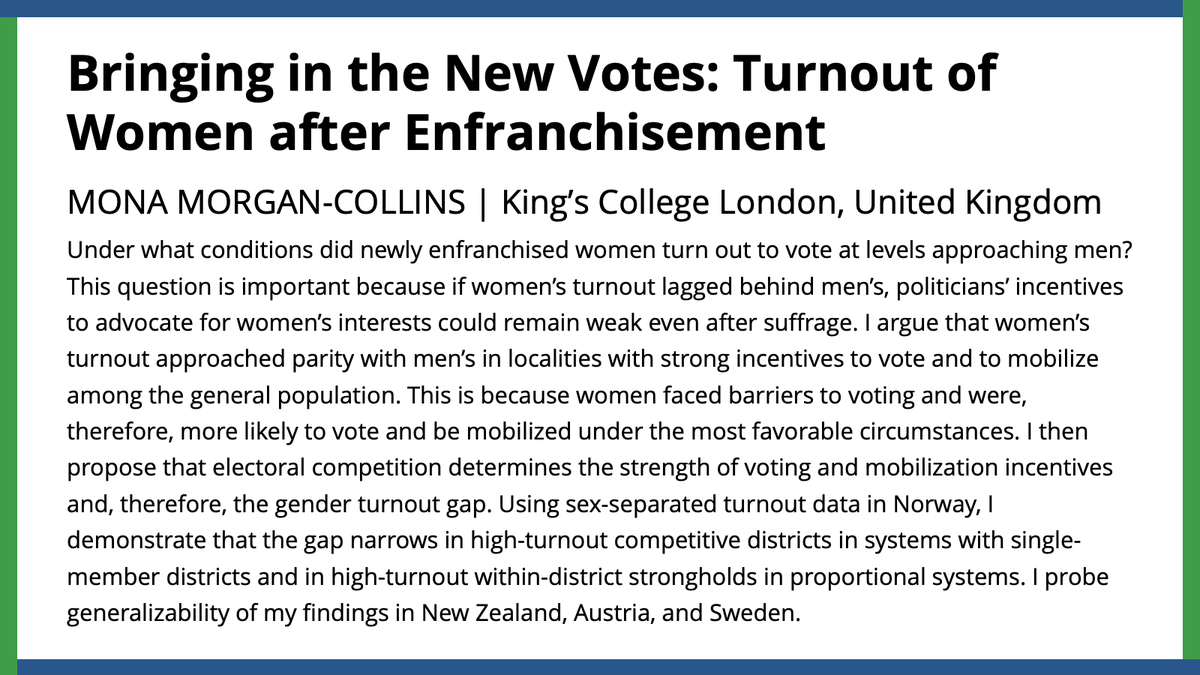
Comparing levels of party affective polarization (PAP) and leader affective polarization (LAP), Andres Reiljan, Diego Garzia, Frederico Ferreira da Silva, & Alexander H.Trechsel illuminate LAP as systematically lower than PAP with the US as the only exception.
#APSRNewIssue
ow.ly/2Y5I50Rpi6w


In this #APSRNewIssue , Robin Harding, Mounu Prem, Nelson A. Ruiz, & David L Vargas analyze how campaign contributions can buy reductions in regulatory enforcement. They find deforestation is significantly higher where politicians are donor-funded.
ow.ly/Bi3a50RphlY


How do states build their informational capacity? Jeremy Bowles argues distributive politics condition the development of state capacity. He finds registration promotes access to narrow-based resources while increasing tax payment.
#APSRNewIssue
ow.ly/x6c450Rouvu


What are the electoral consequences of democratic governments using violence against their citizens? Daniel de Kadt, Ada Johnson-Kanu, & Melissa Sands demonstrate how & and when voters hold incumbents electorally responsible.
#APSRNewIssue
ow.ly/XsGw50Rouoh


Applying complex traditional hierarchical models that account for interactions, Max Goplerud shows how these models can nearly match or outperform state-of-the-art machine learning techniques.
#APSRNewIssue
ow.ly/8Ebc50QGSAw


Drawing on unique individual-level panel data from Zimbabwe, Adrienne LeBas & Lauren Young estimate the change in individual protest intentions following repression and analyze three mechanisms through which repression drives response.
#APSRNewIssue
ow.ly/vvwQ50RouzI


Under what conditions did newly enfranchised female turnout approach parity with male turnout? Mona Morgan-Collins demonstrates the influence of electoral competition on the gender turnout gap using sex-separated data from Norway.
#APSRNewIssue
ow.ly/FvAo50RouCS


Does distance from Nazi concentration camps play a role in out-group intolerance? Modeling the effect of spatial heterogeneity, Tom Pepinsky, Sara Wallace Goodman, & Conrad Ziller find state differences confound the relationship.
#APSRNewIssue
ow.ly/RHrk50QGSV5


In this letter, Jonathan Homola, Miguel Pereira, & Margit Tavits contribute to the growing literature on legacy studies by advancing the discussion about the correct modeling choices.
#APSRNewIssue
ow.ly/w0nv50QGT1C


在这篇#APSRNewIssue 文章中,
Daron Acemoglu
与詹姆斯·A·罗宾逊 (James A. Robinson) 将精英与公民社会对立起来,以解释“最大国家能力出现背后的引擎”。

'Why are borrowers unwilling to demand better consumer financial protections?
Mallory SoRelle
develops a new theory of regulatory feedback effect wherein regulations diminish political engagement by encouraging consumers to blame market actors.' #APSRNewIssue ow.ly/B72H50PnaHE